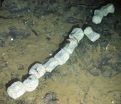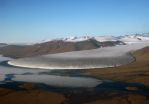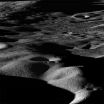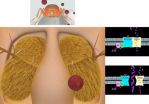(Press-News.org) CORAL GABLES, FL (March 18, 2012) -- University of Miami (UM) doctoral student in Environmental Science and Policy, David Shiffman was invited to tweet updates in real-time, at the International Congress of Conservation Biology, New Zealand, 2011. As a result, more than 100,000 twitter users worldwide saw at least one tweet from the conference, and nearly 200 people from more than 40 countries, on six continents shared at least one tweet from the conference -- greatly exceeding the number of conference attendees.
"While live-tweeting is not a new phenomenon, to my knowledge this was the first time that anyone has ever been invited to a conference specifically for this purpose," says Shiffman, a doctoral student at the Leonard and Jayne Abess Center for Ecosystem Science and Policy, at UM. "Due to twitter's instantaneous nature, I was able to relay my follower's questions to the presenters who were in the room with me. In one case, a presenter was discussing his study site in Brazil, and I received a question from someone in that town interested in his research," says Shiffman.
Shiffman shares the findings of this project in a paper titled "Twitter as a tool for conservation education and outreach: what scientific conferences can do to promote live-tweeting" published in the Journal of Environmental Studies and Sciences. The report includes an introduction to the use of twitter for science, general advice for other scientific conferences to facilitate a similar discussion and analysis of the impact of live-tweeting. The study is available online at: http://rjd.miami.edu/assets/pdfs/pubs/Shiffman%202012%20conference%20live-tweeting.pdf.
"Twitter is particularly well suited for sharing information from conferences," the report states. "[It] allows users to share easily categorized and searchable information instantly with another user around the world."
Shiffman is studying marine conservation policies and outreach, focusing on shark research which he carries out through the UM RJ Dunlap Marine Conservation Program. He was recently named one of the top biologists to follow on twitter (@WhySharksMatter) by the Huffington Post. Shiffman also writes for an ocean science blog called Southern Fried Science.
INFORMATION:
UM researcher revolutionizing scientific communication, one tweet at a time
UM doctoral student at the Leonard and Jayne Abess Center for Ecosystem Science and Policy tweets updates from International Scientific Conference reaching thousands around the world
2013-03-18
ELSE PRESS RELEASES FROM THIS DATE:
Antarctica's first whale skeleton found with 9 new deep-sea species
2013-03-18
Marine biologists have, for the first time, found a whale skeleton on the ocean floor near Antarctica, giving new insights into life in the sea depths. The discovery was made almost a mile below the surface in an undersea crater and includes the find of at least nine new species of deep-sea organisms thriving on the bones.
The research, involving the University of Southampton, Natural History Museum, British Antarctic Survey, National Oceanography Centre (NOC) and Oxford University, is published today in Deep-Sea Research II: Topical Studies in Oceanography.
"The planet's ...
Significant contribution of Greenland's peripheral glaciers to sea-level rise
2013-03-18
The scientists looked at glaciers which behave independently from the ice sheet, despite having some physical connection to it, and those which are not connected at all.
The discovery, just published in Geophysical Research Letters, is important as it will help scientists improve the predictions of the future contribution of Greenland's ice to sea-level rise.
Using lasers which measure the height of the ice from space, and a recently completed inventory of Greenland's glaciers and ice caps, scientists from the European-funded ice2sea programme, were able to determine ...
Male lions use ambush hunting strategy
2013-03-18
Washington, D.C.— It has long been believed that male lions are dependent on females when it comes to hunting. But new evidence suggests that male lions are, in fact, very successful hunters in their own right. A new report from a team including Carnegie's Scott Loarie and Greg Asner shows that male lions use dense savanna vegetation for ambush-style hunting in Africa. Their work is published in Animal Behavior.
Female lions have long been observed to rely on cooperative strategies to hunt their prey. While some studies demonstrated that male lions are as capable at hunting ...
Pneumonia patients nearly twice as likely to suffer from depression, impairments
2013-03-18
ANN ARBOR, Mich. — The long-term consequences of pneumonia can be more detrimental to a person's health than having a heart attack, according to joint research from the University of Michigan Health System and University of Washington School of Medicine.
Older adults who are hospitalized for pneumonia have a significantly higher risk of new problems that affect their ability to care for themselves, and the effects are comparable to those who survive a heart attack or stroke, according to the new findings in the American Journal of Medicine.
"Pneumonia is clearly not ...
Solar storm near Earth caused by fast CME
2013-03-18
VIDEO:
This NASA research model, prepared on Mar. 15, 2013, from a space weather model known as ENLIL named after the Sumerian storm god, shows the way the CME was expected...
Click here for more information.
On March 17, 2013, at 1:28 a.m. EDT, the coronal mass ejection (CME) from March 15 passed by NASA's Advanced Composition Explorer (ACE) as it approached Earth. Upon interacting with the giant magnetic bubble surrounding Earth, the magnetosphere, the CME caused a kind of ...
It's in the cards: Human evolution influences gamblers' decisions, study shows
2013-03-18
New research from an international team of scientists suggests evolution, or basic survival techniques adapted by early humans, influences the decisions gamblers make when placing bets.
The findings may help to explain why some treatment options for problem gamblers often don't work, the researchers say.
For the study, recently published in Frontiers in Psychology, scientists from McMaster University, the University of Lethbridge and Liverpool John Moores University examined how gamblers made decision after they won or lost.
They found that, like our ancestors, ...
Research find links between lifestyle and developing rheumatoid arthritis
2013-03-18
Researchers in Manchester have found a link between several lifestyle factors and pre-existing conditions, including smoking cigarettes and diabetes, and an increased risk of developing rheumatoid arthritis.
Rheumatoid Arthritis (RA) is a chronic disease which affects around 0.8% of the population; and its causes are of great interest to the medical world. Research led by Professor Ian Bruce, NIHR Senior Investigator and Professor of Rheumatology at The University of Manchester and consultant at Central Manchester University Hospitals NHS Foundation Trust, looked into ...
NASA sees leaping lunar dust
2013-03-18
Electrically charged lunar dust near shadowed craters can get lofted above the surface and jump over the shadowed region, bouncing back and forth between sunlit areas on opposite sides, according to new calculations by NASA scientists.
The research is being led by Michael Collier at NASA's Goddard Space Flight Center, Greenbelt, Md., as part of the Dynamic Response of the Environment At the Moon (DREAM) team in partnership with the NASA Lunar Science Institute (NLSI), managed at NASA's Ames Research Center, Moffett Field, Calif.
"The motion of an individual dust particle ...
Earth's interior cycles contributor to long-term sea-level & climate change, scientists conclude
2013-03-18
Ancient rises in sea levels and global warming are partially attributable to cyclical activity below the earth's surface, researchers from New York University and Ottawa's Carleton University have concluded in an analysis of geological studies.
However, the article's authors, NYU's Michael Rampino and Carleton University's Andreas Prokoph, note that changes spurred by the earth's interior are gradual, taking place in periods ranging from 60 million to 140 million years—far less rapidly than those brought on by human activity.
Their analysis appears in Eos, a newspaper ...
Transistor in the fly antenna
2013-03-18
This press release is available in German.
Highly developed antennae containing different types of olfactory receptors allow insects to use minute amounts of odors for orientation towards resources like food, oviposition sites or mates. Scientists at the Max Planck Institute for Chemical Ecology in Jena, Germany, have now used mutant flies and for the first time provided experimental proof that the extremely sensitive olfactory system of fruit flies − they are able to detect a few thousand odor molecules per milliliter of air, whereas humans need hundreds of millions ...
LAST 30 PRESS RELEASES:
Making lighter work of calculating fluid and heat flow
Normalizing blood sugar can halve heart attack risk
Lowering blood sugar cuts heart attack risk in people with prediabetes
Study links genetic variants to risk of blinding eye disease in premature infants
Non-opioid ‘pain sponge’ therapy halts cartilage degeneration and relieves chronic pain
AI can pick up cultural values by mimicking how kids learn
China’s ecological redlines offer fast track to 30 x 30 global conservation goal
Invisible indoor threats: emerging household contaminants and their growing risks to human health
Adding antibody treatment to chemo boosts outcomes for children with rare cancer
Germline pathogenic variants among women without a history of breast cancer
Tanning beds triple melanoma risk, potentially causing broad DNA damage
Unique bond identified as key to viral infection speed
Indoor tanning makes youthful skin much older on a genetic level
Mouse model sheds new light on the causes and potential solutions to human GI problems linked to muscular dystrophy
The Journal of Nuclear Medicine ahead-of-print tip sheet: December 12, 2025
Smarter tools for peering into the microscopic world
Applications open for funding to conduct research in the Kinsey Institute archives
Global measure underestimates the severity of food insecurity
Child survivors of critical illness are missing out on timely follow up care
Risk-based vs annual breast cancer screening / the WISDOM randomized clinical trial
University of Toronto launches Electric Vehicle Innovation Ontario to accelerate advanced EV technologies and build Canada’s innovation advantage
Early relapse predicts poor outcomes in aggressive blood cancer
American College of Lifestyle Medicine applauds two CMS models aligned with lifestyle medicine practice and reimbursement
Clinical trial finds cannabis use not a barrier to quitting nicotine vaping
Supplemental nutrition assistance program policies and food insecurity
Switching immune cells to “night mode” could limit damage after a heart attack, study suggests
URI-based Global RIghts Project report spotlights continued troubling trends in worldwide inhumane treatment
Neutrophils are less aggressive at night, explaining why nighttime heart attacks cause less damage than daytime events
Menopausal hormone therapy may not pose breast cancer risk for women with BRCA mutations
Mobile health tool may improve quality of life for adolescent and young adult breast cancer survivors
[Press-News.org] UM researcher revolutionizing scientific communication, one tweet at a timeUM doctoral student at the Leonard and Jayne Abess Center for Ecosystem Science and Policy tweets updates from International Scientific Conference reaching thousands around the world




